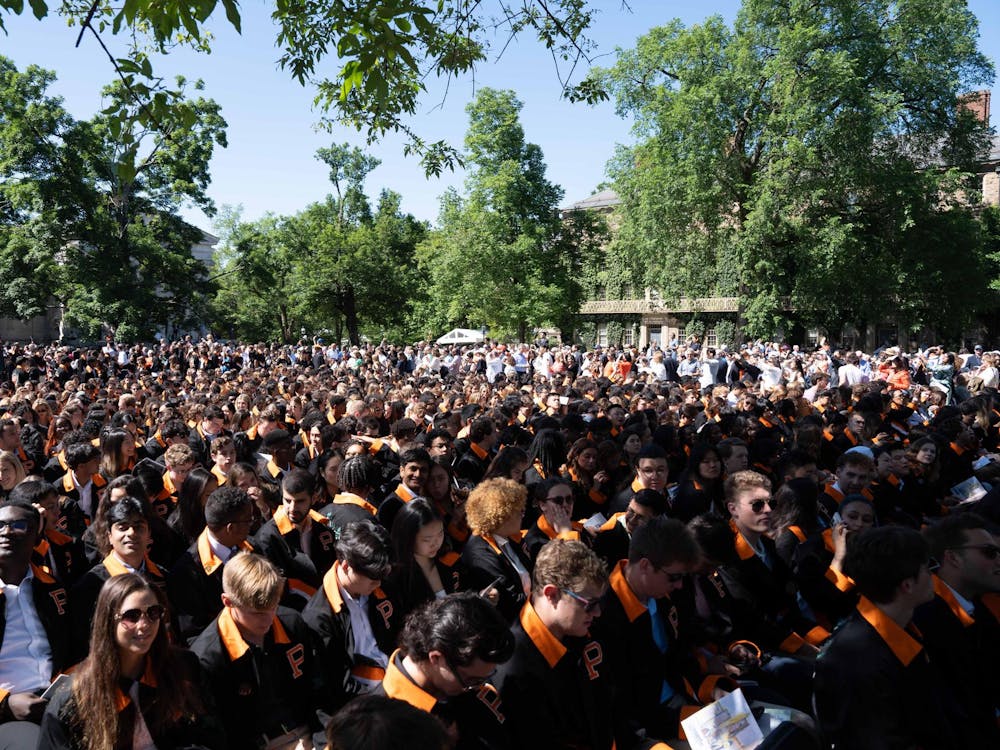In 1984, I graduated near the top of my class from Thomas Jefferson High School in San Antonio, Texas. I had an SAT of 1190 (above the 80th percentile at the time) and a solid GPA. I applied and got into University of California Berkeley, beginning there in the fall of 1984. Then I nearly failed out. My first-semester grades hovered around the C to C- range.
At 18 years old, despite my high school diploma, I was academically ill-prepared for university. However, I still had the capacity and potential to do well. With help, mentorship, and support from both family and faculty, I eventually did.
Fast forward almost 40 years, I am now a professor at Princeton. The key to my success was that I had the opportunity to learn and excel at a top university, and affirmative action played a role in that opportunity. With affirmative action under threat from a looming Supreme Court decision, we have to recognize the real disparities it seeks to remedy.
I was one of a handful of students from my high school to attend a top tier four-year institution, and only one of an even smaller number accepted to a school outside of Texas. My grades and SAT scores were no better than a large percentage of those who applied to UC Berkeley that same year. All things being equal, I likely wouldn’t have made the cut. But all things were not, and are not, equal.
A quick glance at the yearbook page featuring my photo sheds considerable light on the demographics of my high school. The faces are mostly Brown. It was around 90 percent Hispanic or Latino/a. What is not visible from the yearbook page is that Jefferson High was not strong academically and offered insufficient college preparation. These two facts often go hand in hand in the United States: public schools that are predominately Black and/or Brown are often underfunded and/or unable to offer a comparable quality of academic infrastructure and support to predominantly white schools.
Most African American and Hispanic/Latino/a students attend public schools where a majority of their classmates qualify as poor or low-income. These schools remain effectively segregated, educational outcomes for minority children are often a function of their unequal access to key educational resources (funding, teacher quality, curriculum, and class sizes), and there is disparate treatment of students by teachers and school administrators.
For a multiplicity of reasons, Black and Brown students experience a wider range of blocks to educational achievement in multiple school contexts than their white peers. This is not solely due to the economic or geographic contexts of their schools. The pervasive and systemic racism in the educational system in the United States is equally to blame. Affirmative action is a key factor designed to address these disparities, starting with the Supreme Court decision in Brown v. The Board of Education in 1954 and the Civil Rights Act of 1964.
Today in the United States, one can get a good education at a range of schools. However, due to systemic racism, the racial makeup and location of a student’s school as well as a student’s race/ethnicity can impact the academic record they eventually submit in a college application. The standard assessment record (grades and tests) by itself is not an equitable measure of student performance or potential across applicants. Decades of studies support this widely recognized fact, which is why university admission offices use a diversity of criteria, including race or ethnicity, in selecting their incoming classes. What’s more, this diversity of criteria has introduced diversity to universities. Since 1976, non-white student attendance in college has increased 185.5 percent. This is not because non-white students have gotten smarter — they were simply given the opportunity.

In their advice to applicants, Princeton’s admissions staff writes, “Instead of worrying about meeting a specific set of criteria, try to create an application that will help us see your achievements — inside the classroom and out — in their true context, so we can understand your potential to take advantage of the resources at Princeton and the kind of contribution you would make to the Princeton community.”
“Show us what kind of student you are. Show us that you have taken advantage of what your high school has to offer and how you have achieved and contributed in your own particular context,” they continue.
In this country, students’ lived experiences and “particular contexts” are shaped by their race or ethnicity, alongside many other variables. So, race and ethnicity are salient variables along with economic class, geographic location, family history with the university, sports experience, and musical or theatrical engagements, to name a few, in assessing applicants and constructing a vibrant student body. Given the well-documented and substantive impact of race and ethnicity on educational access and outcomes, it would be absurd to ignore or deny this crucial aspect of a student’s identity in an assessment of any applicant for higher education.
And yet it seems that many in the U.S. today, including as many as six supreme court justices, want to isolate race or ethnicity relative to all other salient variables and remove it from consideration. Such a position runs contrary to the data, is anti-educational, and shows intent to perpetuate current aspects of systemic racism. Anti-affirmative action views have a problematic history in the academy and beyond.

As an undergraduate I remember being told: “You only got in because of your name” on more than one occasion. The story was far more complex. I likely made the cut for several reasons, one of those being the inclusion of race and ethnicity as one of the many variables in the assessment of college applications. I was given a chance to “get in” because of a holistic and just set of admission criteria that recognized the complexities and inequities in American society and worked to navigate and ameliorate them. Others “got in” for different reasons than me. Having a cohort with a diversity of lived experiences and backgrounds, with all students selected showing amazing potential for success, is the goal of university admissions.
Any student on the Princeton campus right now, regardless of who they are, is not necessarily a better and more talented human being than many of the other roughly 30,000 people who applied. In fact, I imagine that the standard academic scores of thousands of the applicants are probably near perfect, so those scores clearly cannot be the only, or even the key, variables assessed in forming an incoming class. The admissions team at Princeton (and many other universities) curates, via an assortment of variables, a robust, diverse, and excellent set of young people, all of whom show great potential. Every student at Princeton today should feel honored and lucky to be part of that. I certainly did as an undergraduate student at UC Berkeley. It’s because of that opportunity that you’re reading my thoughts on it now.
It’s a verified reality that the discrimination caused by systemic racism creates inequities in K-12 educational outcomes. Affirmative action is defined as a set of procedures designed to eliminate unlawful discrimination among applicants, remedy the results of such prior discrimination, and prevent such discrimination in the future. Affirmative action is needed until societal changes have erased the systemic and pervasive damage racism creates.
Agustín Fuentes is a professor in the Department of Anthropology at Princeton, a member of the American Academy of Arts and Sciences, and a fellow of the American Association for the Advancement of Science. He can be reached at afuentes2@princeton.edu.








